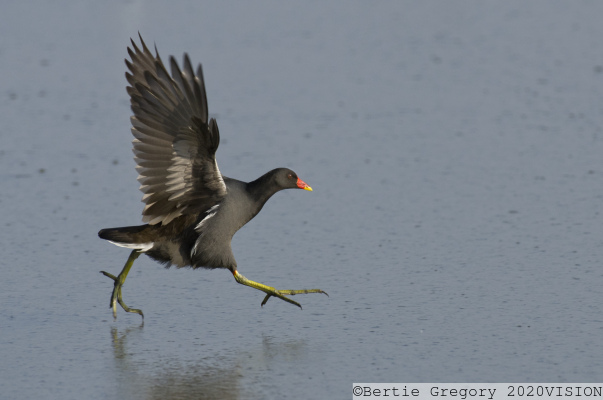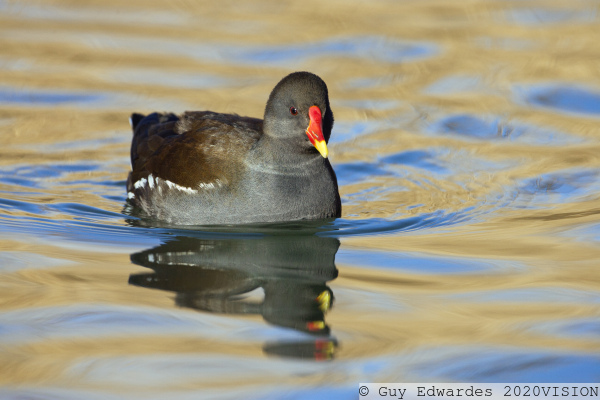Moorhen
Gallinula chloropus
<
>


 Type
Type Bird
Bird Status
Status Common
Common Widespread
Widespread Protected
Protected Amber
Amber Season
Season Spring
Spring Summer
Summer Autumn
Autumn Winter
Winter On the water itself, towards edges where there's vegetation.
Most visitors to the Montgomery Canal will be familiar with this black wading water bird. Widespread and common, the Moorhen can be found on waterways such as rivers, canals, ponds and lakes through town and countryside, though it tends to be rarer in upland areas.
Moorhens are omnivores and will eat everything from snails and insects to small fish and even berries.
If disturbed, they'll normally take cover in vegetation towards the water's edges, but if they do take to the wing, flight will be brief and laboured.
Spring offers a great opportunity to watch this bird's lovely mating rituals; the male swims towards the female with its bill in the water and if his demonstration is successful the two birds will soon nibble each other's feathers. Together they build a messy looking nest using twigs, which they defend rapaciously.
The Moorhen is often confused with the similar looking Coot. However, aside from their visual differences, Moorhens also tend to spend more time out of the water than their relative, and even climb trees.
It has an olive-black back (separated from its blue-black body by a white line) with white patches under its tail and a red bill with a yellow tip (as opposed to the Coot which is larger and has a white bill and face shield).


